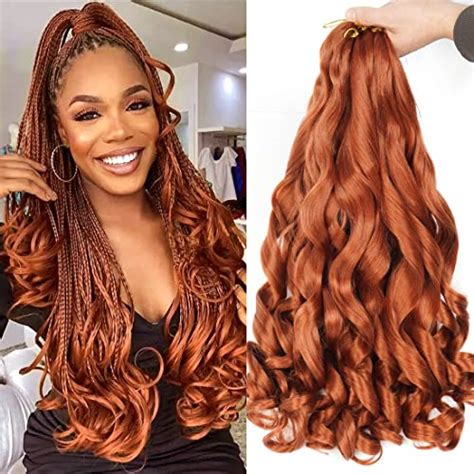Step-by-Step Braid Techniques for Extensions
Braid Prep:
- Choose the Right Extensions: Opt for human hair or synthetic extensions that match your natural hair texture and color.
- Section Your Hair: Divide your hair into sections for easier braiding. Clip up sections you’re not working on.
- Attach the Extensions: Secure the extensions to your hair using microbeads, fusion, or track methods. Ensure a tight and discreet attachment.
Classic Braid:
- Create Three Strands: Divide your hair into three equal sections.
- Cross Under: Take the right strand and cross it under the middle strand.
- Cross Over: Bring the left strand over the new middle strand.
- Repeat: Continue alternating under and over until you reach the end. Secure with a hair tie or elastic.
French Braid:
- Start at the Crown: Divide a small section of hair at the crown into three strands.
- Add Hair from the Side: As you braid, pick up small sections of hair from the sides and add them to the outside strands.
- Cross Over: Continue braiding as in the classic braid.
- Finish: Secure the braid at the nape of your neck.
Dutch Braid (Reverse French Braid):
- Start at the Nape: Begin at the nape of your neck and divide hair into three sections.
- Add Hair from Underneath: Pick up small sections of hair from underneath and add them to the outside strands.
- Cross Under: Cross the outer strands under the middle strand.
- Finish: Secure the braid at the crown.
Fishtail Braid:
- Divide into Two Sections: Split your hair into two equal sections.
- Take Small Strands: From the outside edge of the left section, take a small strand and cross it over to the right section.
- Repeat: Repeat step 2 on the right side, taking a small strand and crossing it over to the left section.
- Continue: Continue alternating until you reach the end and secure with a hair elastic.
Comparison of Braiding Hair Extensions
| Feature | Micro-Beads | Fusion | Track |
|---|---|---|---|
| Attachment Method | Tiny metal beads clamp hair | Heat bonds hair extensions | Glue or sew-in tracks |
| Durability | Shortest (3-5 months) | Longest (6-8 months) | Moderate (4-6 months) |
| Damage to Hair | Minimal | Moderate | Can cause heat damage |
| Cost | Mid-range | Highest | Lowest |
| Versatility | Not suitable for all hair types | Can create tight or loose braids | Limited braid options |
Applications of Braiding Hair Extensions
Enhance Length and Volume: Instantly transform fine or short hair into luscious locks with the help of braided extensions.

Create Stunning Styles: Experiment with intricate braids and achieve elaborate updos, ponytails, and buns with the extra length and volume provided by extensions.
Hide Hair Loss: Braided extensions can effectively conceal thinning hair or cover up bald spots, restoring confidence and self-esteem.
Add Color and Contrast: Braid extensions in vibrant hues or contrasting colors to create a statement piece or blend with natural highlights.
Experiment with Braided Bangs: Try clip-in braided bangs for a temporary change of style without committing to a permanent cut.
Creative New Word to Generate Ideas: “Braidspiration”
Tables
Table 1: Braiding Hair Extension Attachment Methods
| Attachment Type | Description | Pros | Cons |
|---|---|---|---|
| Micro-Beads | Tiny metal beads clamp hair together | Invisible, no heat damage | Can slip out, discomfort |
| Fusion | Heat bonds extensions to natural hair | Long-lasting, versatile | Can cause heat damage, expensive |
| Track | Sews or glues extensions to tracks of hair | Affordable, easy to remove | Can be bulky, visible |
Table 2: Braided Hair Extension Care
| Maintenance Step | Frequency | Importance |
|---|---|---|
| Wash Regularly | Once a week | Prevents tangling, keeps braids clean |
| Use Moisturizing Products | As needed | Nourishes hair extensions, prevents dryness |
| Avoid Heat Styling | As much as possible | Heat can damage extensions, reduce lifespan |
| Brush Gently | Daily | Removes tangles without damaging braids |
Table 3: Braid Types for Hair Extensions
| Braid Type | Description | Ideal for |
|---|---|---|
| Classic Braid | Basic three-strand braid | All hair types, versatile styles |
| French Braid | Braid starting at the crown, adding hair from sides | Thick hair, elegant updos |
| Dutch Braid | Reverse French braid, adding hair from underneath | Fine hair, dramatic styles |
| Fishtail Braid | Delicate interwoven braid | Long, thick hair, boho-chic looks |
Table 4: Cost and Longevity of Braiding Hair Extensions
| Extension Type | Average Cost | Longevity |
|---|---|---|
| Micro-Beads | $300-$600 | 3-5 months |
| Fusion | $500-$1000 | 6-8 months |
| Track | $150-$300 | 4-6 months |
